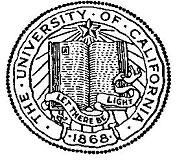
|
IN MEMORIAM
Chin Long Chiang
Professor of Biostatistics, Emeritus
UC Berkeley
1914—2014
Chin Long Chiang passed away at his home in Berkeley, California on April 1, 2014, at age 99. Dr. Chiang, as he was commonly referred to on campus, had been an active member of the Berkeley faculty for more than thirty years before retirement in 1987. During this time he was Chair of the Division of Biostatistics in the School of Public Health and also Co-Chair of the Graduate Group in Biostatistics, both for long periods of time.
Chin Long Chiang was born in Ningbo, Zhejiang Province in China on November 12, 1914. He initially attended Tsing Hua University in Beijing, but the Japanese invasion of China in 1937 forced him and his fellow classmates to flee inland after his freshman year. Ultimately, he received his BA degree in Economics in 1940, although his primary interest already lay more in mathematics. Further biographical details can be found in an interview published in the journal Statistical Science in 1999.
In 1946, Chin Long and his wife, Fu Chen (“Jane”) moved to the United States where they both attended the University of California, Berkeley. In 1948, Chin Long graduated with an M.A. in Statistics (having moved from Economics at Berkeley). For his graduate research, he studied under the supervision of Professor Jerzy Neyman, receiving his Ph.D. in 1953. After graduation he worked in the Statistical Laboratory on the Berkeley campus that was directed by Professor Neyman (before the existence of the Department of Statistics).
Following a suggestion of Professor Neyman, Dr. Chiang moved to the Biostatistics program in the School of Public Health in 1951. One of the first courses he taught there involved the statistical principles underlying the demographic use of life tables. The latter provide estimates of age-specific mortality rates using available demographic data, and Chiang developed methods for converting such rates into useful cumulative probabilities of death over specific time intervals. Chiang approached the subject through the lens of the mathematics of stochastic processes and was thus able to place the field on a much firmer theoretical footing. Ultimately this research and teaching led to the publication of his first book, Introduction to Stochastic Processes in Biostatistics, published in 1968. Long after, his extensive studies of life tables also led to a book entitled The Life Table and Its Applications (1983).
Dr. Chiang published two other books during his extensive career. An Introduction to Stochastic Processes and Their Applications (an extended version of the first part of his 1968 book) appeared in 1980. Statistical Methods of Analysis was written well into his retirement years and published in 2003. This latter book was based on some of his teaching materials from introductory classes in Biostatistics that he had taught in the School of Public Health. Dr. Chiang was honored with the prestigious Berkeley Citation on his retirement.
Dr. Chiang was well known for early work on many other topics related to the modeling of time to event data with medical applications. He was an early proponent of the “illness-death” model that considered disease progression through a multi-state stochastic process. In addition, he made important contributions to the theory of competing risks that systematically considers multiple causes of death simultaneously. Both of these general ideas are now fundamental to the modern treatment of survival data.
Dr. Chiang was devoted to the development of Biostatistics at Berkeley and was a long-time leader of many efforts on the campus in this regard. He recruited many of the faculty during his leadership. He was also a key player in the Graduate Summer Session in Health Statistics, a six-week program that rotated amongst the key departments in the US (in Berkeley in 1971-72) that ran for over 20 years. Dr. Chiang was also an enthusiastic and tireless traveler across the world, attending many international conferences and holding visiting appointments at a wide variety of institutions in the U.S. and China. He was particularly interested in Europe following a visit to England as a Fulbright scholar in 1964 to give lectures on life tables due to an invitation from Peter Armitage.
Perhaps it was from these travels that Dr. Chiang developed his long-time interest in photography. He also used to love playing the card game bridge, and enjoyed reusing his childhood skills in Go with his grandsons in later years.
Dr. Chiang was predeceased by his wife Fu Chen (“Jane”) of 68 years who died in 2013, and by his son, William. He is survived by his son, Robert, and his wife, Janeen; his daughter, Harriet, his daughter-in-law Carol, and his grandsons, Eric and Andrew.
Nicholas P Jewell